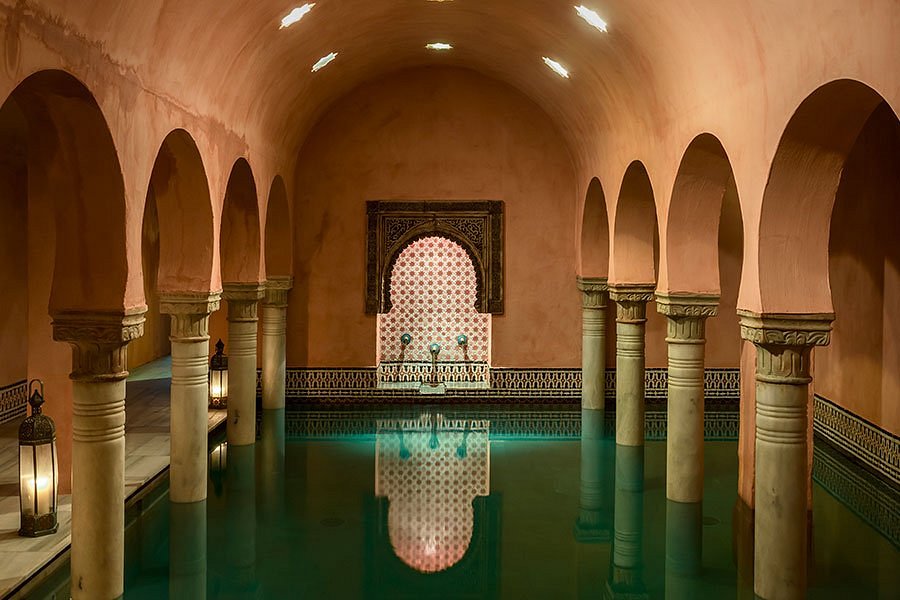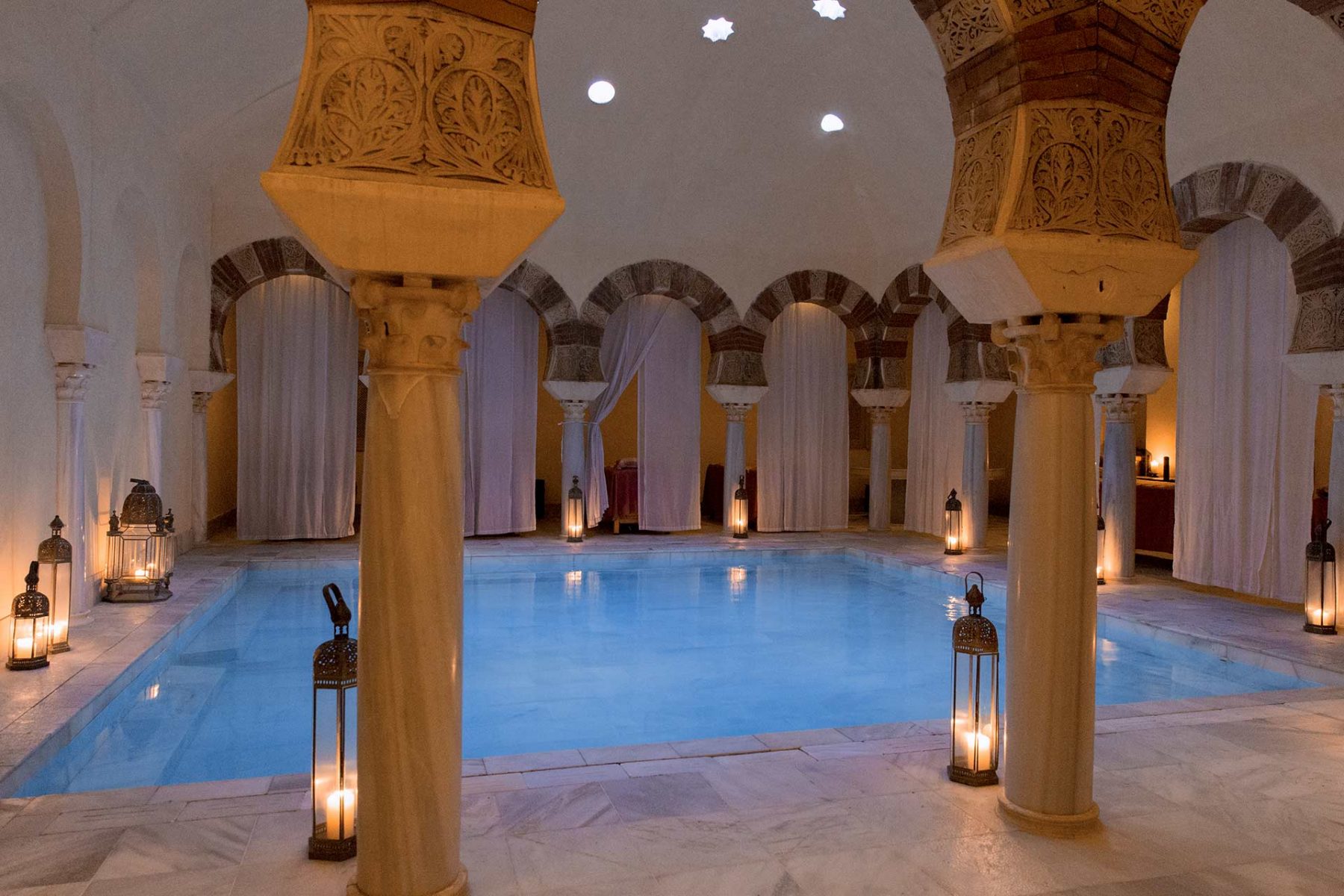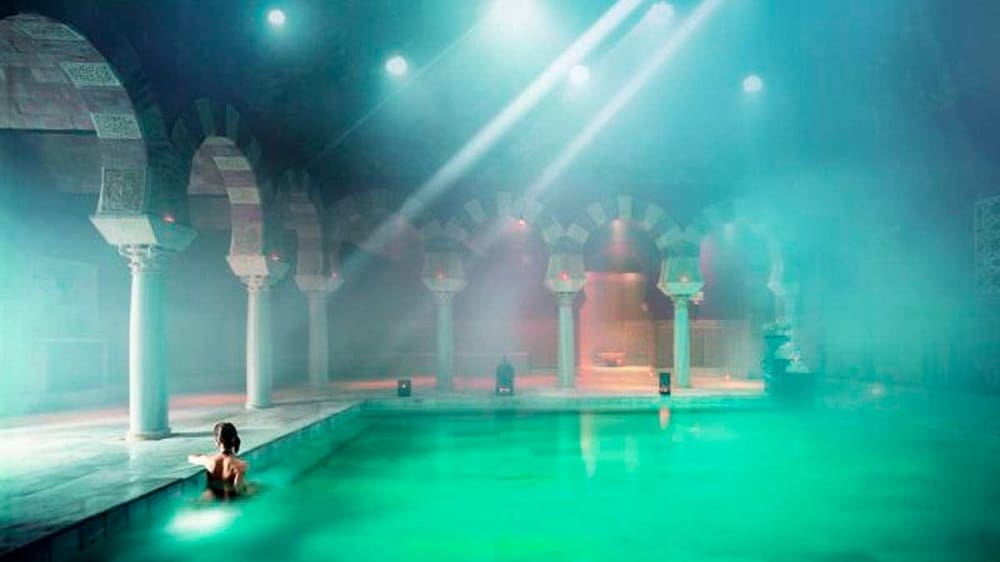

Gonzalo Dominguez
Andalusia, a land where history whispers from every corner, is a treasure trove of stories waiting to be discovered. Among its many jewels, the Arab Baths shimmer with a unique allure, beckoning travelers to step into a world where architecture, culture, and history converge. In this journey, guided by Gonzalo Dominguez, we will traverse time and space, exploring the legacy of the Moors and the timeless charm of Andalusia’s Arab Baths.
Table of Contents
- A Legacy of the Moors
- Looking to Learn Spanish? We’ve Got You Covered
- The Essence of Arab Baths
- The Best Arab Baths in Andalusia
- The Modern Revival of Arab Baths
A Legacy of the Moors
The Moors, a collective term for the North African Berbers and Arabs, began their conquest of the Iberian Peninsula in 711 AD, marking the onset of a transformative era that would last nearly eight centuries. Their influence wasn’t just a fleeting touch; it was a profound immersion that reshaped the cultural, scientific, and architectural landscape of the region.
Cultural Synthesis
The Moors’ arrival in Andalusia wasn’t merely a military conquest; it was a cultural infusion. They brought with them a rich tapestry of traditions, arts, and knowledge. The cities of Al-Andalus, as the Moors called their territory in Iberia, became melting pots where Islamic, Christian, and Jewish traditions often coexisted and intermingled. This synthesis birthed a unique Andalusian culture, characterized by its music, art, and literature, which bore the distinct stamp of all three civilizations.
Looking to Learn Spanish? We’ve Got You Covered
The Best Intensive Spanish Classes in the World’s Top Cities


Buenos Aires: Great City, Great Classes.


Malaga: Where Study Meets the Beach.
Embark on Your Spanish Classes Today: Click Here


Your Own City: Online Classes.
Embark on Your Online Spanish Classes: Click Here
Scientific and Intellectual Prowess
The Moors were instrumental in turning cities like Córdoba, Granada, and Seville into intellectual powerhouses. These cities housed libraries with vast collections of manuscripts, attracting scholars from across the known world. The Moors made significant advancements in various fields, including mathematics, astronomy, medicine, and philosophy. Their translations of ancient Greek and Roman texts played a pivotal role in preserving and transmitting this knowledge, eventually laying the groundwork for the European Renaissance.
Architectural Marvels
Beyond their intellectual contributions, the Moors left an indelible mark on Andalusia’s architectural landscape. Their structures, characterized by intricate tilework, horseshoe arches, and ornate geometric patterns, showcased a blend of functionality and aesthetic beauty. The Alhambra in Granada, with its lush gardens, flowing water features, and detailed stucco work, stands as a testament to their architectural genius. Similarly, the Mezquita-Catedral of Córdoba, with its forest of columns and red and white arches, exemplifies the synthesis of Moorish and Christian architectural styles.
Check out our blog about it: The Influence of Moorish Architecture in Andalusian Cities
Agricultural and Technological Innovations
The Moors introduced advanced agricultural techniques, transforming Andalusia’s landscape with terraced fields, crop rotation, and irrigation systems. They introduced new crops like rice, sugarcane, and citrus fruits, which thrived in the region’s climate. Additionally, their technological innovations, such as the water wheel and advanced metallurgy, played a crucial role in the region’s economic prosperity.
The legacy of the Moors in Andalusia is not just a chapter in history books; it’s a living tapestry that continues to influence the region’s culture, architecture, and identity. Their profound impact is evident in every corner of Andalusia, from the cobbled streets of Seville to the majestic palaces of Granada, reminding us of a time when the region was a beacon of enlightenment and progress in Europe.
Also read our blogs about:
Sevilla’s Cathedral: A Masterpiece of Gothic Architecture
Sevilla: Everything You Need to Know and How to Reach It from Malaga
The Essence of Arab Baths
The Arab Baths, or “Baños Árabes” as they are known in Spanish, represent more than just architectural marvels or places of hygiene. They are emblematic of a society that placed immense value on both physical and spiritual well-being, and they encapsulate the essence of daily life, culture, and social norms during the Moorish rule in Andalusia.


A Sanctuary of Purification and Reflection
At the heart of the Arab Baths was the concept of purification. In Islamic tradition, cleanliness is not just a physical act but also a spiritual one. Before the five daily prayers, a ritual washing, or “wudu,” is performed. The baths, with their series of cold, warm, and hot rooms, facilitated this purification process, allowing individuals to cleanse their bodies and prepare their souls for communion with the divine.Beyond the religious aspect, the baths also provided a space for reflection and relaxation. The gentle sound of water, the soft glow of light filtering through star-shaped openings, and the aromatic scents created an ambiance of serenity, allowing visitors to momentarily escape the hustle and bustle of daily life.
Social Hubs and Centers of Interaction
While the baths served spiritual and relaxation purposes, they were also vibrant social centers. They were places where people from all walks of life converged. Gossip was exchanged, business deals were brokered, and friendships were nurtured in these communal spaces. For many, a visit to the baths was as much about social interaction as it was about cleansing.
A Testament to Moorish Innovation
The design and functionality of the Arab Baths are a testament to the Moors’ innovative spirit. The underfloor heating systems, the strategic placement of windows and vents for optimal temperature control, and the intricate hydraulic systems showcased their advanced understanding of engineering and architecture.Moreover, the aesthetic elements of the baths, from the intricate geometric tilework to the ornate stucco carvings, reflected the Moors’ appreciation for beauty and their desire to create spaces that were not just functional but also visually captivating.
The Arab Baths of Andalusia offer a window into the soul of Moorish society. They exemplify a culture that seamlessly blended the practical with the spiritual, the communal with the personal. Today, as we step into these ancient chambers, we are not just walking into a space of historical significance but also experiencing the essence of a civilization that deeply valued balance, beauty, and holistic well-being.
The Best Arab Baths in Andalusia
Andalusia, with its rich Moorish heritage, is home to several Arab Baths that have withstood the test of time. Each bathhouse, whether preserved from antiquity or restored to its former glory, tells a unique story of the region’s past. Here, we journey through some of the most iconic Arab Baths in Andalusia, exploring their history, architecture, and the experiences they offer.
Hammam Al Ándalus, Granada
Situated in the heart of Granada, a stone’s throw away from the majestic Alhambra, Hammam Al Ándalus is a blend of history and luxury. The bathhouse, with its warm pools surrounded by candlelit alcoves and the soft strains of Andalusian music, transports visitors to a bygone era. The architecture is a testament to Moorish craftsmanship, with its horseshoe arches, intricate tilework, and domed ceilings.


Baños Árabes de Jerez, Jerez de la Frontera
One of the most well-preserved Arab Baths in Andalusia, the Baños Árabes de Jerez offers a genuine glimpse into Moorish life. The bathhouse retains its original layout, with distinct cold, warm, and hot rooms. The walls, adorned with detailed geometric patterns, and the star-shaped skylights create an ambiance that is both serene and historically rich.


Baños de la Reina Mora, Ronda
Tucked beneath the bustling streets of Ronda lies the Baños de la Reina Mora. This underground sanctuary, with its star-shaped skylights casting a gentle glow, is a testament to Ronda’s rich Moorish heritage. The baths, though smaller than some of their counterparts, offer an intimate experience, allowing visitors to connect deeply with the past.


Baños Árabes de Córdoba
Córdoba, once the capital of the Caliphate of Córdoba, is home to some of the most impressive Moorish structures, and its Arab Baths are no exception. Located near the Alcázar, these baths showcase the grandeur of the city’s golden age. The octagonal pillars, the marble floors, and the ornate plasterwork reflect the opulence and architectural prowess of the era.


Andalusia’s Arab Baths are more than just historical sites; they are living museums that offer a tactile experience of the region’s Moorish past. Each bath, with its unique architecture and ambiance, tells a story of innovation, artistry, and cultural synthesis. A visit to these baths is not just a journey through stone and water but a voyage through time, connecting the present with the echoes of a splendid past.
The Modern Revival of Arab Baths
In the heart of Andalusia, where the echoes of the past resonate with every step, the Arab Baths are experiencing a renaissance. While their historical significance remains undiminished, a modern revival has transformed these ancient sanctuaries into contemporary havens of wellness and relaxation, blending the age-old traditions with the comforts of the 21st century.
The Contemporary Hammam Experience
Today’s hammams, inspired by the ancient designs of the Moors, have evolved to cater to the modern seeker of relaxation and rejuvenation. While the core principles remain the same, these establishments now offer a plethora of spa treatments, from aromatherapy sessions to therapeutic massages, all set within the serene ambiance reminiscent of the original Arab Baths.
Merging Tradition with Modernity
The modern hammams have successfully merged traditional elements with contemporary amenities. Underneath the domed ceilings and amidst the intricate tilework, one can find state-of-the-art hydrotherapy pools, steam rooms infused with essential oils, and specialized treatment rooms offering everything from clay body wraps to hot stone massages.
A Cultural and Wellness Tourism Boom
The revival of the Arab Baths has also contributed significantly to cultural and wellness tourism in Andalusia. Travelers, both domestic and international, are increasingly drawn to these establishments, seeking authentic experiences that combine cultural immersion with personal well-being. The baths offer a unique opportunity to step back in time while indulging in modern luxury, making them a must-visit for any traveler to the region.
Educating and Preserving Heritage
Many of the modern hammams also play a pivotal role in educating visitors about the rich history and significance of the Arab Baths. Guided tours, interactive exhibits, and workshops are often organized, ensuring that the legacy of the Moors is not only preserved but also shared with newer generations. This educational aspect adds another layer to the hammam experience, allowing visitors to connect more deeply with Andalusian history and culture.
Getting to the end…
The Arab Baths, with their serene ambiance and architectural splendor, are more than just relics of Andalusia’s storied past; they are living testaments to a time when cultures intertwined and created something truly magical. As we navigate the modern world, these baths serve as a gentle reminder of the beauty that arises when different worlds meet. Through the eyes of Gonzalo Dominguez, we’ve not only explored the physical structures of these baths but also delved into the soul of Andalusia, a region that continues to enchant, inspire, and captivate the hearts of all who wander its lands.





